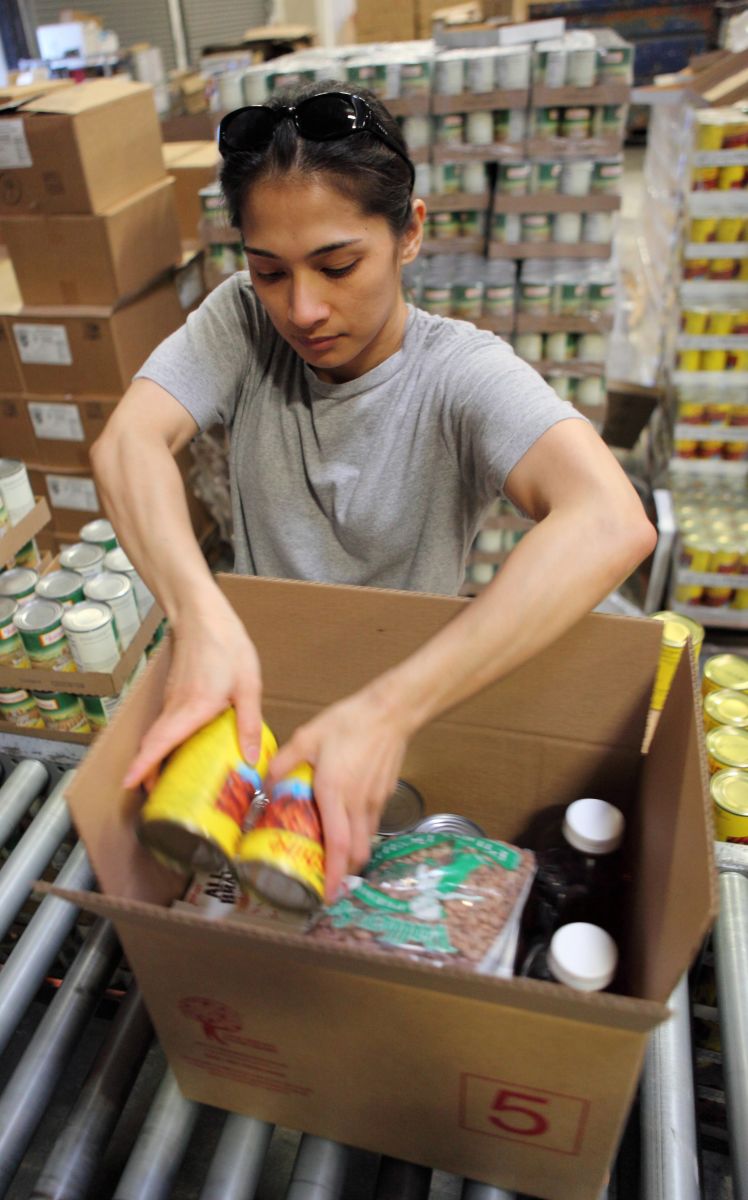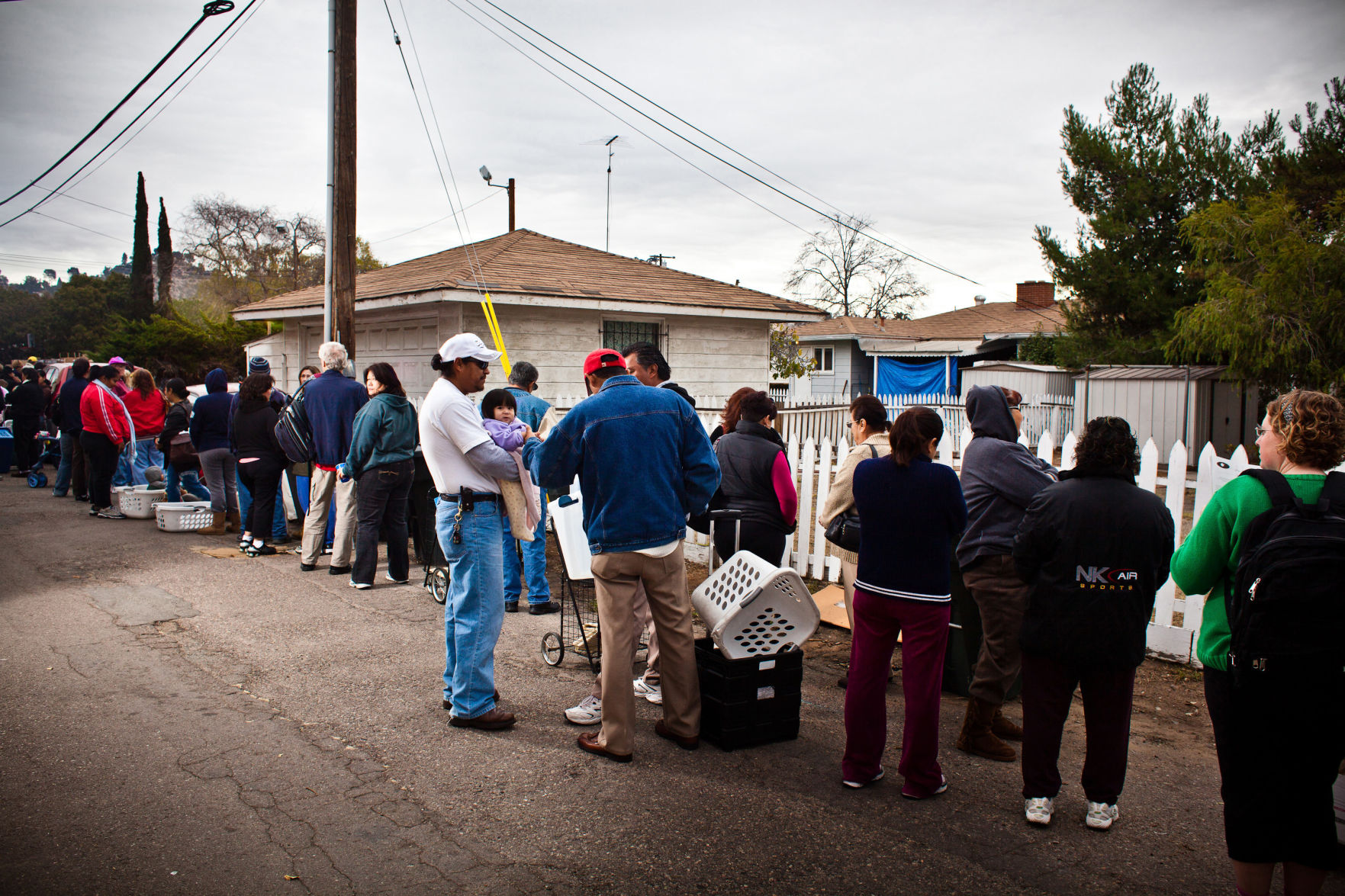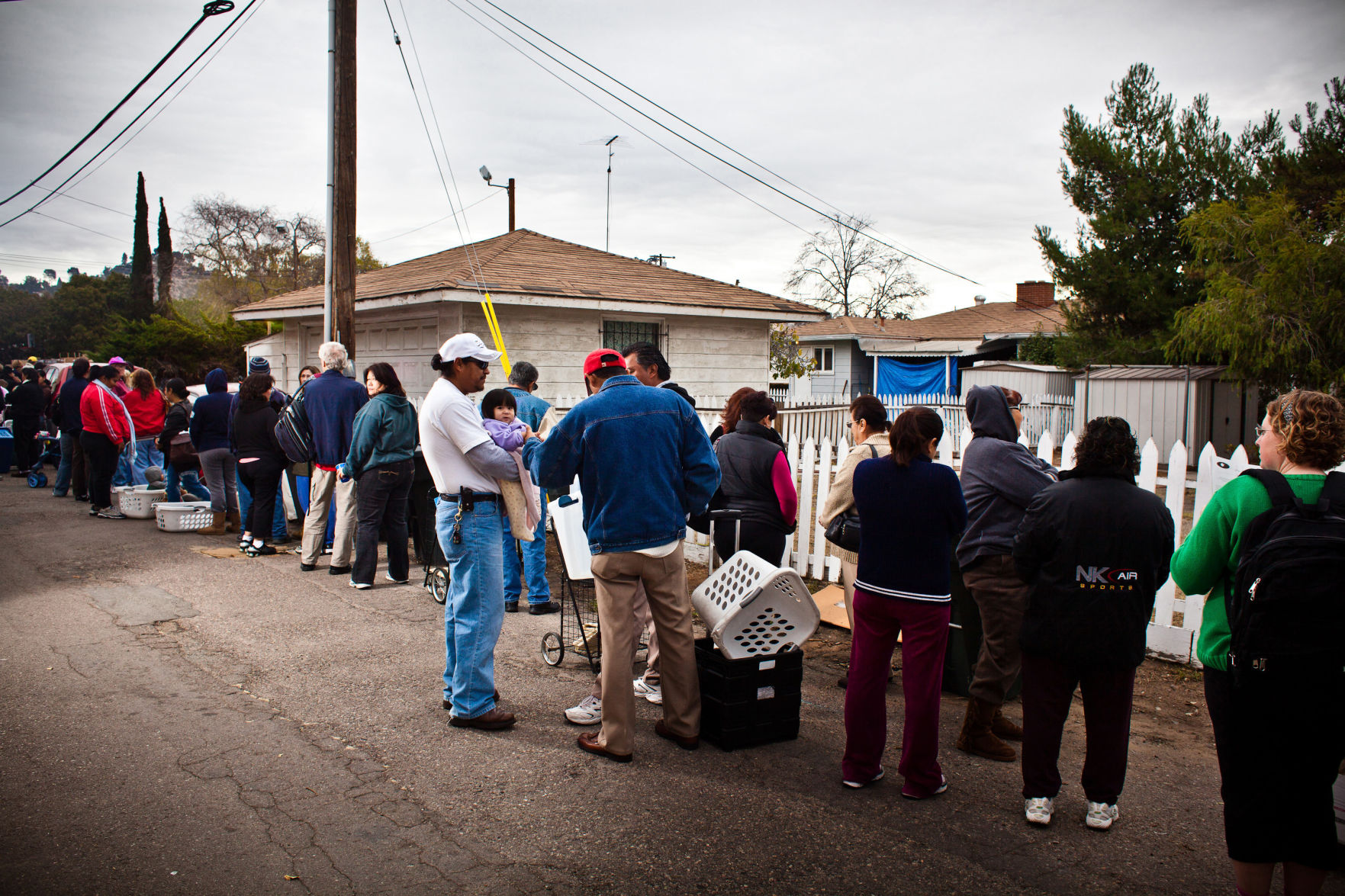Hunger doesn’t make for a great postcard. That’s probably why we don’t hear too much about the 450,000-plus San Diegans who don’t always know where their next meal will come from. San Diego has a civic responsibility to maintain a sunny, happy disposition. That attracts visitors, and their dollars, which in turn employs more locals. Employment helps prevent hunger, after all.
That’s one of the difficulties some of San Diego’s hunger agencies have: expressing the real need for real help. “From where I stand, that is partially true,” says Alberto Cortés, executive director of Mama’s Kitchen, which supplies meals to San Diego families struggling against AIDS and cancer. “I think San Diego is perceived as having less need than, say, a city like Detroit.”
Yet, the reality: The average cost of a meal in San Diego County is $3.17, or 13 percent higher than the national average of $2.79. A full 15 percent of San Diego’s population is hungry, including 162,000 children. One in four children arrive at school hungry. About 35 percent of hungry San Diegans don’t qualify for federal food assistance, which results in what Feeding America San Diego (FASD) calls “the hunger gap.” To fill the hunger gap, relief organizations need to conjure 77 million meals every year.

Hunger Works
snapshot of giving: san diego food bank volunteer
A child in San Diego is not necessarily the image that comes to mind when most people think about hunger as a societal ill. A child from another city, maybe. One from an impoverished country, certainly. Most people envision a hobo (outdated language intentional)—an unshaven man, grizzled by alcohol and drugs, grappling with various mental illnesses, living on the streets, and hoofing it to the soup kitchen whenever he’s not panhandling.
Truth is, hunger is much more mundane. The stats, according to the most recent study from FASD: 26 percent of hungry locals are minors; 10 percent are under age 5; 64 percent of hungry households have a member who worked for pay in the last 12 months; 27 percent have at least one member in the military.
“We’re constantly working to change that perception,” says Amanda Schaap, marketing and communications manager for FASD. “There’s a common stereotype of the hungry person being the homeless person. Through research, we know that’s just not the case. We’re talking about children of working families.” As for the high amount of military families who are food insecure, Schaap says constant relocation hurts their chances of having a second wage-earner.
Talk with enough hunger-relief professionals and you come to a further, darker realization. And that is: fundraising is difficult when you’re not a cute kid or sporting a pink ribbon. Susan G. Komen is currently the ne plus ultra of philanthropic marketing. Images of starving children in foreign countries pull at America’s heartstrings. Some groups have to fight to make the people they help seem just as valuable. Mama’s Kitchen was founded during the heights of the AIDS crisis, and had to convince a still largely homophobic community to help their largely gay clientele. Empathy generation—putting a relatable, human face on grisly statistics—is an important part of hunger relief work.
“We feed the hidden hungry—senior adults you don’t see on the streets or in food bank lines because they can’t get out,” says Debbie Case, president and CEO of San Diego’s Meals-on-Wheels, whose meal delivery service to seniors also doubles as a check-in on the city’s shut-in elderly population. “People over the age of 85 are the fastest growing population in California. Medicine has progressed; so has nutrition, helping people live through cancers and heart bypasses. Two-thirds of our population goes into a hospital for malnutrition. In the last 12 months, our North County office has grown by over 33 percent, east county by 14 percent.”
Much of San Diego’s hunger relief comes through the San Diego Food Bank’s 80,000-square-foot warehouse in Miramar. The bank partners with 330 nonprofit partners (soup kitchens, churches, senior centers, etc.) to feed over 370,000 people a month. From 2013 to 2014, they distributed 18.3 million meals (22 million pounds of food). This month, they acquired the food bank in North County, which will add another 60–70 nonprofit clients and feed another 30,000 to 50,000 a month. “North County is horrifically underserved,” says president and CEO James Floros.
After years of fighting hunger with empty, sodium-bombed calories and seeing the deleterious results of diabetes and other nutritional diseases, hunger organizations are paying attention now more than ever to nutritional content. “We no longer distribute soda,” says Floros, explaining that the Food Bank offers to dump and recycle soda donations. “Last year we did 22 million pounds of food; 8 million of that was fresh produce. I want to get that to 10 million.”
On the surface, it seems like the golden age for raising money. Susan G. Komen owns the NFL! The Ice Bucket Challenge was huge! Then there was that one where everyone put Rudolph-red noses on their social media photos. What was that for, again? Just go viral, says modern times.
“Everyone wants to know how to make the next ice bucket challenge,” laughs Case. “But truth is, most people can’t remember what cause the ice bucket challenge was for. Fundraising is more about long-term relationships.”
By the Numbers
64
âpercent of hungry households have a member who worked in the last year
27â
percent of food insecure households have at least one member in the military
450
thousand San Diegans don’t always know where their next meal will come from
Technology has definitely helped. People can now donate by text or by tweet, which is truly amazing—a hypersimplified way for the modern world to participate with a single push of a button. But it’s also a double-edged sword, Case explains.
“With texts, we don’t get the phone numbers or personal information to contact them again,” she says. “The younger donor is a different donor. There’s an earthquake in Peru, and they donate. They get a thank-you via text, and they’re on to the next emergency. Giving is all about personal relationships, and with technology you don’t often get to form those.”
Finally, let’s say someone is ready to donate. Now, hunger philanthropists have to convince them of the best form of donation. Namely, cash. While nutritious food is always a welcome gift, most hunger relief organizations can turn one dollar into three-to-five dollars worth of food. In other words: If you donate a $5 can of soup, that’s $5 worth of soup. If you give a $5 bill, that can turn into $15–$25 worth of soup through bulk purchasing and other discounted means.
And none of this works without volunteers. The San Diego Food Bank has about 28,000 volunteers, whose work saves the organization $1.3 million annually. Meals on Wheels depends on volunteers working over 211,575 hours every year, and driving over 725,000 miles using their own gas and transportation.
Every one of these organizations boasts videos on their websites that are filled with personal, human stories of the people they help. They also have stats for more economically motivated donors. “Feeding a senior for an entire year costs the same as one day in a hospital. Can you do the math?” says Case.
The reality is that San Diego’s high cost of living hides a less-glamorous truth for 15 percent of the population. As our average life expectancy rises—currently 81 for American women, 76 for men—so does our need for food. Most hunger relief professionals will not ever achieve the marketing bonanza of an Ice Bucket Challenge. Instead, they’ll continue to shake hand after hand, lobby for government funds, and make real, emotional connections for one dollar, or a million, at a time.

Hunger Works
PARTNER CONTENT
Photo by John Miriles

















